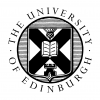© Pint of Science, 2025. All rights reserved.
Join us to celebrate National Postdoc Appreciation Week (NPAW) and the invaluable contributions of our postdoctoral research community. Whether you're a postdoc, faculty member, or student, this seminar offers a unique opportunity to learn about the fantastic research happening across the School of Biological Sciences and expand your network. Don’t miss out on this chance to show your appreciation and support for your postdoc community!
Refreshments and goody bags will be provided courtesy of Proteintech.
#NPAW2024 #CelebratePostdocs @proteintech @pintofscience
Refreshments and goody bags will be provided courtesy of Proteintech.
#NPAW2024 #CelebratePostdocs @proteintech @pintofscience
“Ties that bind” – patterns of linkage can produce signals of male female evolutionary conflict even in the absence of sexually antagonistic selection
Dr Manas Geeta Arun
(Postdoctoral Research Associate)
For more than two decades empiricists have strived to document evidence of evolutionary conflict between males and females driven by natural selection acting in opposite directions on traits common to both males and females. Initial enthusiasm for such conflict – primarily driven by laboratory studies on Drosophila melanogaster – has now been tempered by recent work that is more ambivalent about the ubiquity of such sexual conflict. In this talk I take a step back and scrutinise some of the empirical quantities employed as indicators of sexual antagonism. Using Hill-Robertson Interference – an important idea developed in Edinburgh in the 1960s – I show with the help of computer simulations that patterns of statistical associations between alleles at different fitness determining sites in the genome can drive signals of sexual antagonism - even in the absence of sexually antagonistic selection.
Blowing Up, Zooming In: affordable super-resolution imaging of your specimens with Expansion Microscopy
Dr Kseniia Bondarenko
(Postdoctoral Research Associate)
Expansion microscopy (ExM) is a relatively recent addition to the array of optical imaging protocols and is based on the physical expansion of tissue embedded in a polyacrylate gel matrix. Unlike complex and expensive STED and STORM techniques, ExM allows achieving lateral resolution below 25 nm on a widefield or confocal microscope using cheap and widely available reagents (that you probably already have in your lab). This talk highlights the principle of the method, different ExM types, application examples, possible add-ons, and potential limitations to consider. And, of course, lots of pretty pictures!
Real-time insights into PhyA dynamics in shade detection
Dr Marissa Valdivia-Cabrera
(Postdoctoral Researcher)
This study explores the sensitivity of the Arabidopsis photoreceptor phyA in detecting subtle variations in shade. Using the novel reporter enzyme nanoLUC, we monitored the real-time dynamics of the PHYA protein in planta for the first time. Furthermore, we examined the complex interactions between phyA and other signaling pathways. Our findings enhance the understanding of plant photoreceptors and the regulatory mechanisms behind phytochrome activation, providing important insights into how plants perceive and respond to light.
Spatial control of cohesin loading on chromosomes in the yeast Schizosaccharomyces pombe
Dr Hollie Rowlands
(Postdoctoral Research Associate)
Cohesin is a ring-shaped protein complex that encircles chromosomes and promotes their accurate segregation during cell division; it also organizes chromosomes by forming chromatin loops. In the yeast Schizosaccharomyces pombe cohesin loading on chromosomes and loop formation require the highly conserved Mis4/Ssl3 complex. Here, we analysed how a conserved patch on Ssl3, directed by the cell cycle regulator Dfp1-dependent kinase, determines the genomic distribution of cohesin to regulate the organisation of chromosomes. This understanding of cohesin function is essential, as mutations in cohesin and its accessory proteins are associated with genetic diseases, cancer, and infertility.
Map data © OpenStreetMap contributors.

